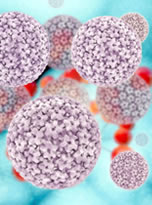Read and report vaccine reactions, harassment and failures.

Non-cutaneous HPVs are typically transmitted sexually. Over the course of their lifetime, more than 80 percent of women and 90 percent of men will become infected with at least one HPV type.
Risk factors for acquiring HPV are directly related to sexual behavior of the individual and their partners. Epidemiologic studies are inconclusive as to whether other risk factors including genetics, age of sexual initiation, number of pregnancies, lack of circumcision of male partner, and tobacco use increase a person’s susceptibility to HPV infection.
IMPORTANT NOTE: NVIC encourages you to become fully informed about HPV and the HPV vaccine by reading all sections in the Table of Contents , which contain many links and resources such as the manufacturer product information inserts, and to speak with one or more trusted health care professionals before making a vaccination decision for yourself or your child. This information is for educational purposes only and is not intended as medical advice.



